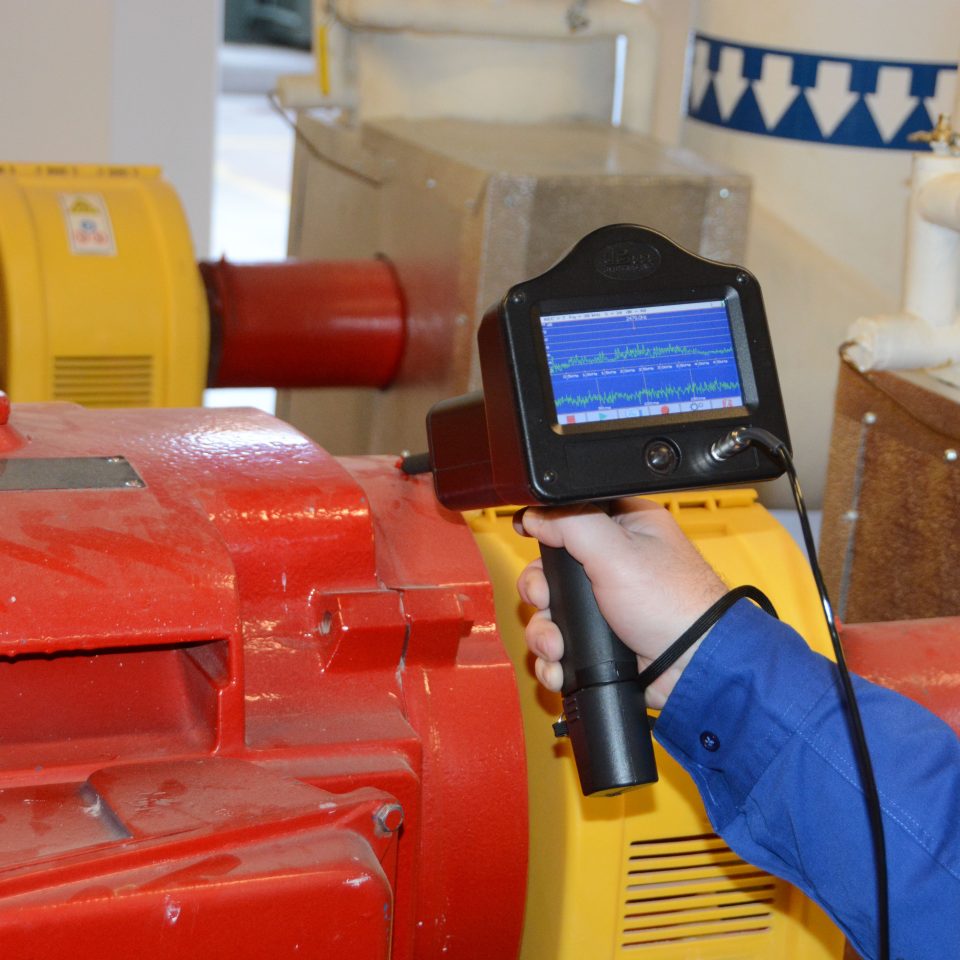Vibration analysis has long been the instrument of choice to use for bearings and other rotating equipment. More commonly, ultrasound is being used in conjunction with vibration analysis to help technicians confirm the condition of mechanical assets.
One scenario in which ultrasound may be used first over vibration analysis is with the monitoring of slow speed bearings. Slow speed bearing monitoring with ultrasound is simple enough: because most high-end ultrasound instruments have a wide sensitivity range and frequency tuning, it is possible to listen to the acoustic quality of the slow speed bearings.
In extreme slow speed bearing applications (usually less than 25rpm), the bearing will produce little to no ultrasonic noise. In that case, it is important to not only listen to the sound of the bearing, but to analyze the recorded ultrasound file in a spectrum analysis software, focusing on the time wave form to see if there are any anomalies present. If “crackling” or “popping” sounds are present, then there is some indication of a deformity occurring. In bearing speeds above 25rpm, it is possible to set a baseline decibel level and trend the associated decibel level readings over time.
To get the most out of an ultrasound bearing condition monitoring program, it is best to establish routes for data collection. Through this effort, maintenance technicians can set baselines and bearing condition alarm levels. The inspector first establishes a route in the ultrasound software of the points where the data will be collected and then loads the route into the ultrasound instrument.
Once the baseline has been established, alarm levels can be set. For slow speed bearings, these alarm levels may need to be adjusted since they do not produce as much high frequency sound as bearings that are rotating at faster speeds.
Once the baselines and alarm levels have been set, it is only necessary to record the data or dB readings. From that point forward, a sound file recording is only taken once the point has reached either the low alarm, or the high alarm. The sound file recording can then be compared to the original baseline sound file.

Conclusion
Airborne and structure-borne ultrasound instrumentation has become a must-have technology for any maintenance and reliability program. Due to its enhanced sensitivity and ability to detect slight changes in the amount of high frequency sound produced by rotating equipment, ultrasound is ideally suited to detect early stage bearing fatigue, even in slow speed bearings. By translating the high frequency sound into the low frequency or audible range, these instruments allow the users to hear, see, and diagnose bearing faults.
Some advantages of ultrasound:
- High frequency sound is very directional; therefore, problems can easily be located.
- The learning curve to become proficient at using ultrasound is much shorter compared to other technologies.
- Ultrasound provides an early warning sign of impending mechanical failure.
- Ultrasound can be used in normal plant/manufacturing environments and background noise is not an issue.



